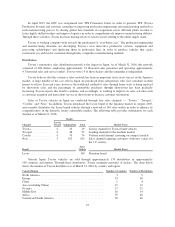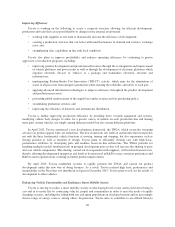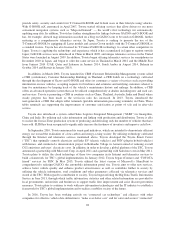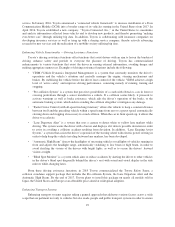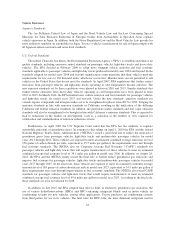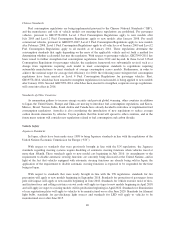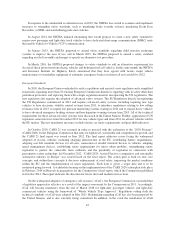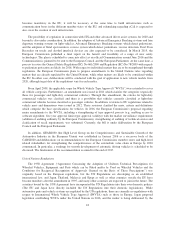Toyota 2015 Annual Report Download - page 38
Download and view the complete annual report
Please find page 38 of the 2015 Toyota annual report below. You can navigate through the pages in the report by either clicking on the pages listed below, or by using the keyword search tool below to find specific information within the annual report.Insurance
Toyota provides insurance services in the United States through Toyota Motor Credit Corporation’s wholly-
owned subsidiary, Toyota Motor Insurance Services, Inc. (“TMIS”) and its wholly-owned insurance company
subsidiaries. Their principal activities include marketing, underwriting and claims administration. TMIS also
provides coverage related to vehicle service agreements and contractual liability agreements through Toyota
dealers to customers. In addition, TMIS also provides coverage and related administrative services to affiliated
companies of Toyota Motor Credit Corporation. Toyota dealers in Japan and in other countries and regions also
engage in vehicle insurance sales.
Other Financial Services
Toyota Finance Corporation launched its credit card business in April 2001 and began issuing Lexus credit
cards in 2005 when the Lexus brand was introduced in Japan. As of March 31, 2016, Toyota Finance Corporation
has 14.2 million card holders (including Lexus credit card holders).
All Other Operations
In addition to its automotive operations and financial services operations, Toyota is involved in a number of
other non-automotive business activities. Net sales for these activities totaled ¥1,177.3 billion in fiscal 2016,
¥1,255.7 billion in fiscal 2015 and ¥1,151.2 billion in fiscal 2014. Sales to external customers of all other
operations in fiscal 2016 represented 2.2% of Toyota’s net revenues for fiscal 2016. Substantially all of Toyota’s
revenues from other operations were derived in Japan.
Housing
Toyota established its subsidiary Toyota Housing Corporation in April 2003 and has transferred to it product
planning and sales operations related to the manufacture and sale of housing. Furthermore, in order to quickly
and accurately grasp clients’ needs and to plan, develop and sell products on a timely basis, in April 2008,
Toyota transferred the product development operation to Toyota Housing Corporation. In October 2010, Toyota
spun-off its housing operations (project planning, technology development and manufacturing) through a
statutory demerger and integrated them into Toyota Housing Corporation. Toyota believes that in the vastly
changing housing market environment, the integration of the development, manufacture and sales functions will
expedite decision making and lead to flexible business operations that will enable Toyota to better respond to the
needs of even more customers. In March 2005, Toyota, together with institutional investors, agreed to jointly
invest in Misawa Home Holdings, Inc. (“Misawa”; renamed Misawa Homes Co., Ltd.) pursuant to its request for
assistance in its rehabilitation. In April 2010, determining that a stronger collaboration with Misawa would be
desirable in order to achieve further growth in the difficult operating environment of the housing industry,
Toyota Housing Corporation agreed to purchase Misawa shares from an institutional investor. In addition,
Toyota transferred ownership of Misawa to Toyota Housing Corporation in October 2010. Through these
activities, Toyota has strengthened the housing business of both companies.
Information Technology
See “— Enhancing Vehicle Functionality and Intelligent Transport Systems” for a description of Toyota’s
information technology.
Governmental Regulation, Environmental and Safety Standards
Toyota is subject to laws in various jurisdictions regulating the levels of pollutants generated by its plants.
In addition, Toyota is subject to regulations relating to the emission levels, fuel economy, noise and safety of its
products. Toyota has incurred significant costs in complying with these laws and regulations and expects to incur
significant compliance costs in the future. Toyota’s management views leadership in environmental protection as
an important competitive factor in the marketplace.
33




